A feel good story of young love that was meant to be, then wasn’t, but then was again, is Japan’s animated film of the year – or so the Japan Academy Prize panel would say.
This is JapanTravelMate.com’s first movie review. I’ve been wanting to watch this Studio Ghibli production for a while, after seeing it promoted by Madman Entertainment as part of the Reel Anime 2012 road show of screenings.
P.S. You can find the trailer with English subtitles at the end of this post.
UPDATE: February 18, 2013 – an English dub version of the film is being released in March 2013. At the end of this post you’ll also find the trailer for this English dubbed version.
The film’s screenplay was created by Hayao Miyazaki, the anime legend who directed four of Studio Ghibli’s most famous animated movies: Princess Mononoke, Spirited Away, Howl’s Moving Castle and Ponyo. Hayao takes a step back from the role of director, which is taken on by his son Goro Miyazaki in only his second film.
It’s 1963 in Yokohama (just south of Tokyo on Tokyo Bay) and the busy port city is growing and re-building along with the rest of Japan. The Tokaido line of the bullet train (from Tokyo to Osaka) would open a year later to coincide with the Tokyo 1964 Olympics. Families are re-adjusting after the devastation of World War II and the neighbouring conflict of the Korean War, many without fathers and grandfathers.
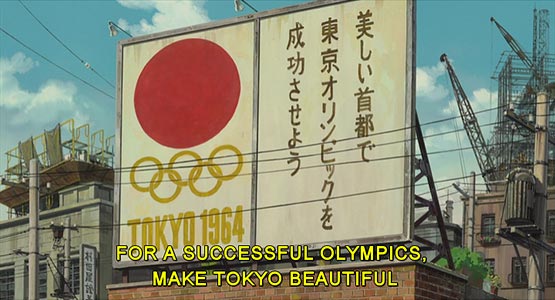
On top of a hill – let’s call it Poppy Hill – overlooking the port lives a young girl, a junior high school student named Umi. Umi’s parents aren’t around much and she lives in a boarding house that her grandmother owns, along with her sister. As the oldest of the younglings, Umi has a lot of responsibility and takes on duties like cooking and cleaning in the boarding house, while dealing with school and a potential love interest.
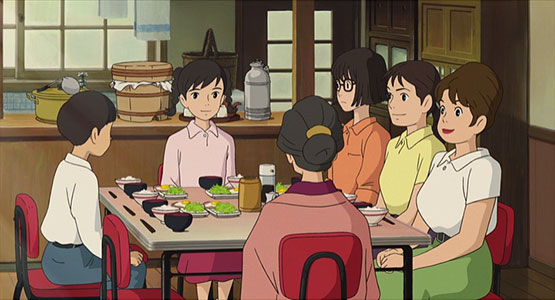
Enter – Shun.
Shun is a strong willed student who goes to high school with Umi. The romance starts when Shun performs a dare-devil trick – jumping from the student’s club house as a protest to save it from demolition. The young love story with its twists and turns, and the students campaign to save their beloved, but aging club house, comprise the two main plots of the film.
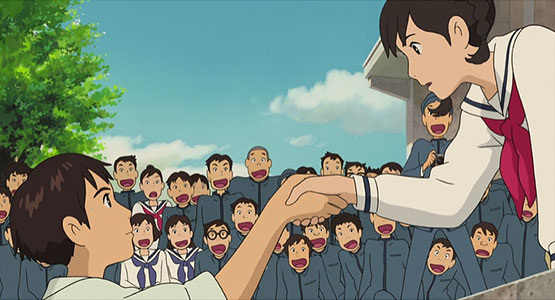
This is where I thought the movie was getting into stereotypical love-drama territory, as gaping crowds cooed in awe at the touch of a helping hand as the girl’s cheeks lit up with red blushes. So as not to be a spoiler, I’m not going to say anymore except that it doesn’t continue in the stereotyped fashion – which makes for an interesting story.
All the teasers on this film talking about the most cutting edge and vibrant animation are all doing their bit to over-hype this award winning Japanese animated film from Miyazaki and son.


Although not “cutting edge”, the animation definitely lives up to its description, that it “captures the entrancing beauty of Yokomaha’s harbour and lush surrounding hillsides”. The streets of the port city are bustling with traditional vendors and rickshaws alongside speeding Toyopets. At night, red lanterns light up narrow alleyways filled with standup bars and fish sellers. Every scene is filled with hurrying people and flashes of new technology.
In the hillsides, the soundtrack changes to a lazily paced song that could slow your heart to 60 beats per minute. Neighbourhoods are filled with greenery and life seems to go by slowly.
Then, it’s back to school.

The students are keen on defying the rule of the board that governs the school, and the once boys only club house is filled with students of both sexes all pitching in to pretty the place up. This is where the familiar feeling of junior high school drama comes in – camaraderie, teamwork and cheeky antics. But will the club house be saved?
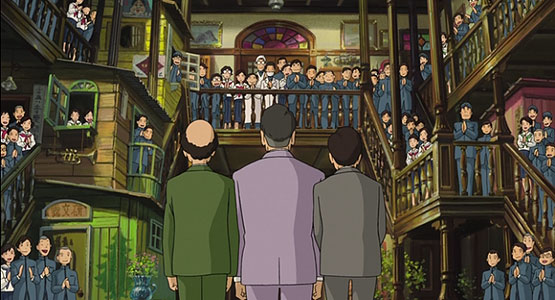
Studio Ghibli is basically the Walt Disney of Japan and produces films for families and kids that have appeal to just about anyone.
But being based on the girl’s manga of the same name, this movie seems targeted a bit more towards the ladies. This is definitely a movie for:
- girls to watch,
- to watch with girls,
- or to practice your Japanese listening skills – which is 50% of the reason I watched the movie.
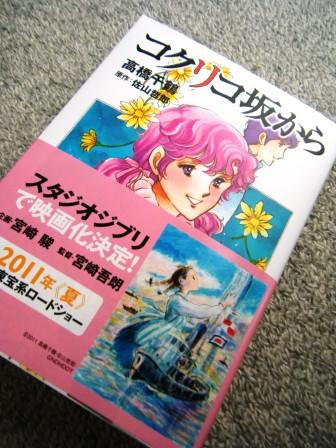
.
I definitely enjoyed the film and can see why it won the 2012 Animation of the Year award from the Japan Academy Prize.
Put this one on your “to watch” list – but go see Spirited Away first if you haven’t already.
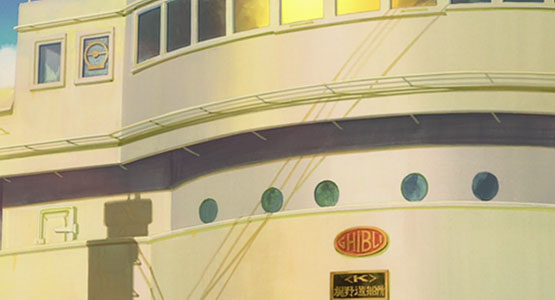

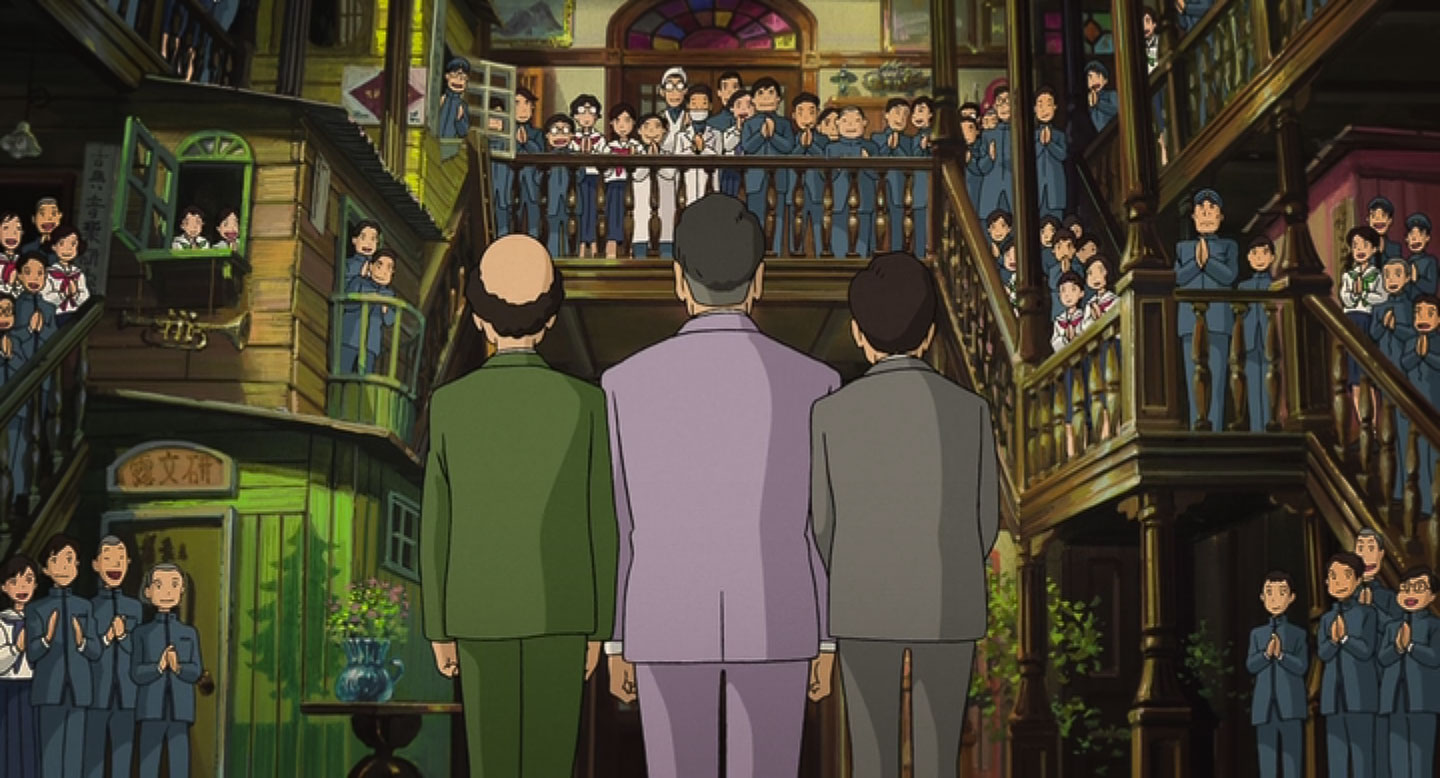

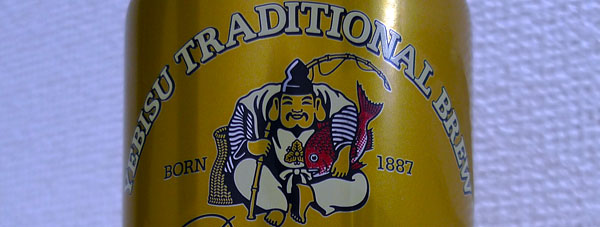
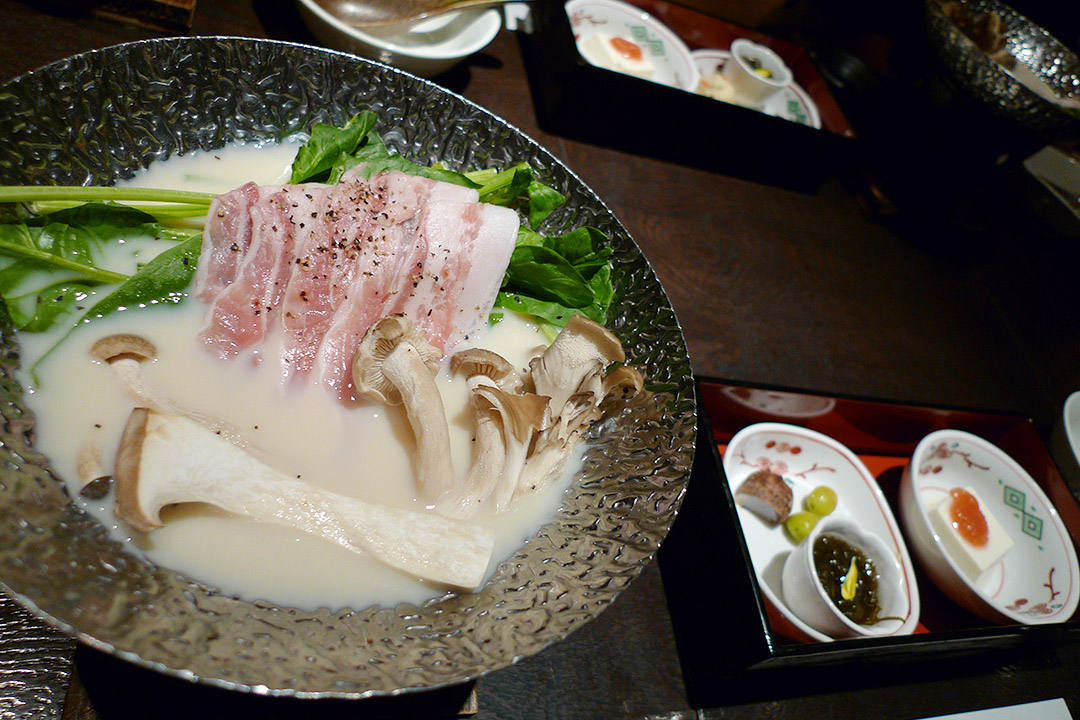
I liked your review, but something you said at the end seems odd:
“But being based on the girl?s manga of the same name, this movie seems targeted a bit more towards the ladies. This is definitely a movie for:
girls to watch,
to watch with girls,
or to practice your Japanese listening skills ? which is 50% of the reason I watched the movie.”
If the movie had been a male lead or based on a shonen manga, would it be for everyone rather than just for “girls to watch” or “to watch with girls”? There’s a strong tendency to shunt movies with largely female casts, female protagonists, or that deal with growing up female as “for girls” or “chick flicks,” whereas movies with male protagonists or coming of age tales about boys are for everyone.
Now, if you wanted to say that the movie would be good for girls because it shows well-developed, complex female characters and good role models, that’s one thing, but in that case, it would be good for boys, too, to show that girls are also human beings with interesting experiences. Miyazaki Hayao’s films have done a lot for the case of female protagonists as protagonists for both boys and girls, and I hope Goro continues this legacy.
Hi Leah, thanks for reading the review.
It’s difficult to answer your question, if Shun (the young boy) was the lead, then the film would be more focused on the story of his family and less about love. My impression of the movie is that it was more of a love story than other Studio Ghibli films, and from what I’ve seen of the advertising here in Japan, it’s definitely being marketed toward girls. The flyer on the manga (pictured in the article) is just one small example.
I’m not “shunting” this movie, it was just too much of a love story for me, I’m not a fan of love drama at all. From the tone in your comment it sounds like you think I’m being sexist…
My two favourite Miyazaki films are Spirited Away and Howl’s Moving Castle. The lead in both of these are girls and definitely have a broad appeal to boys, girls and families… just about anyone really! It’s the story that makes me like these films, I like the fantasy.
I don’t like love dramas – it’s as simple as that. Still, this is a decent movie which I enjoyed.
Let me elaborate: It’s fine to say that you didn’t care for the film because of the focus on the love story or because of how the love drama was carried out. That’s perfectly valid. It’s fine to say that the film was marketed toward girls since the original story was from a shojo manga.
The issue I had was solely the recommendation of the movie for girls or to watch with girls. Some boys/men like love dramas. Some girls/women don’t. I just didn’t see anything in particular in the review that made this a girls’ movie. Love dramas, romance, and shojo manga are no more the exclusive property of girls than action and adventure are of boys.
The flyer on the manga advertising the movie adaptation is pretty common. The target audience for the manga is probably girls, but the advertisement on the manga itself is not really evidence of this. I’m reading 大奥 right now, and there are flyers wrapped around the manga advertising the films and drama with the official posters. This is just evidence that the movie adaptations of manga are marketed toward the readers of said manga.
In short, I’m not implying that you are sexist, just pointing out my confusion over the recommendation that the film is for girls or to be watched with them. Why wouldn’t you recommend this for a boy? Why not just say “for people who like [JHS] love dramas” or something?
Also, on an unrelated note, Ghibli often does include inside jokes, like the Ghibli placard on the ship. I think the engine on Marco’s airplane in Kurenai no Buta also read “Ghibli.”
Cool Leah, nicely picked up about the Ghibli inside joke… I’ll have to watch out for that when I re-watch any of the films.
You’re right, I didn’t talk too much in the review about why it is a bit lovey-dovey, and perhaps it’s just because I don’t know any boys (e.g. younger teenage brothers, or students at the Japanese schools I teach at) or guys (myself or mates) that are/ever been interested in this genre that I said it’s a film for girls.
Plus, it’s my first film review – ever – so I’m not claiming to be an expert/thought leader/considerate writer! Maybe I’ll make a better go of it next time… I plan to watch and review “Children Who Chase Lost Voices” next. I haven’t actually seen any of Shinkai’s films or read the manga, but still, looks interesting!